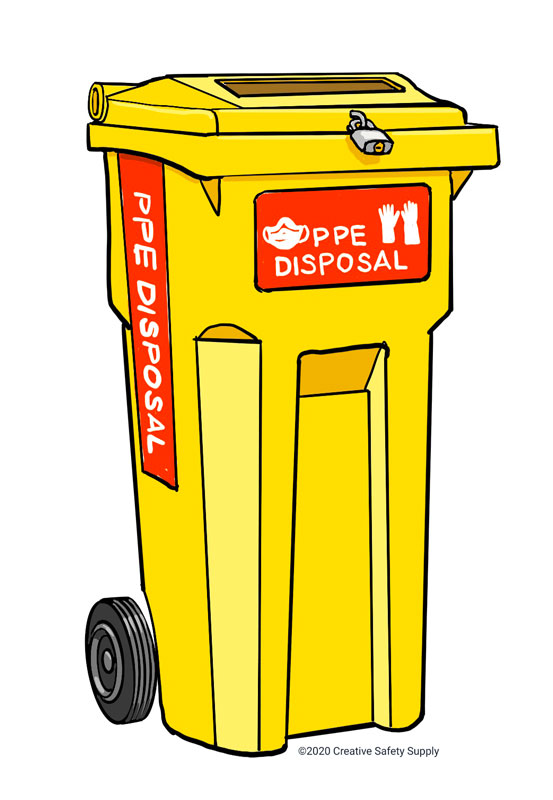
Personal protection equipment, or PPE, is an important part of the overall safety program of any facility. There are many different types of PPE out there ranging from gloves to hardhats to full-body hazmat suits. In a lot of cases, PPE can be reused multiple times without any issues. In other situations, however, it will be just a one-time use item. No matter what type it is, all PPE will eventually need to be disposed of, and it is important to ensure that it is done properly.
Standard PPE Disposal
When it is time to get rid of most types of personal protection equipment, it can be dismantled and thrown away without too much special treatment. This would apply to things like earplugs, most hardhats, most gloves (depending on what was handled), and other similar items. It is important to ensure the item is properly dismantled or destroyed, however, so that someone doesn’t try to continue to use the equipment. Using outdated or damaged personal protection equipment can cause people serious harm and put them at major risk for injury.
Disposing of Contaminated PPE
It is not uncommon for personal protection equipment to be used to protect the wearer from dangerous substances. This could be gases, acids, biological contaminants, lead, or any number of other things that can cause people harm. The personal protection equipment is designed to keep these dangerous substances away from the mouth, nose, and skin of the person wearing it. When disposing of the PPE, it is important to take steps to ensure the contaminants aren’t released in an area where they could cause harm.
The specific method of disposal will depend largely on what type of contamination is involved. For extremely dangerous substances, a hazmat team will have to take custody of the PPE and go through a process tailored to the exact substance. For standard contaminants like, for example, lead, the PPE must be cleaned first to remove this heavy metal. Once properly cleaned, it will be contained and then disposed of properly to avoid the risk of groundwater contamination. Each situation will have a different set of standards, which is why it is important for safety managers to keep up to date with the latest OSHA standards in this area.
Similar Questions
- What PPE is recommended for chemical hazards?
- What is in a PPE kit?
- What is PPE?
- Can PPE be shared, reused, or altered?
- What are different types of PPE?
- What are different types of hand protection?
- What hazards do PPE protect from?
- What type of training is there for PPE?
- What PPE is commonly used in construction sites?
